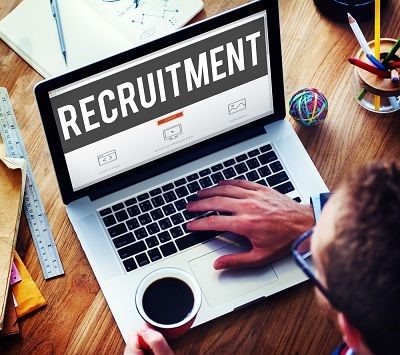Computer Says You're Hired
7th Oct 2019

In a recent BBC article entitled “Can a computer really recruit the best staff?” it is suggested by Bill Nowacki, Managing Director of decision science at KPMG, that the analysis of Big Data can be applied to improve a range of areas in how organisations function. Now, this is a generally accepted field of research with numerous examples of how Big Data can improve an organisation’s effectiveness, however one of the most interesting applications referred to in the article was how this data can be applied to the recruitment of staff. The article suggested that the amount of data available relating to an individual’s daily activity i.e. phone calls, social media interaction, usage of internal systems, even more old-fashioned concepts such as when employees log in and out of the building etc. can help build a picture of the day-to-day movements and behaviours of their highest performing members of staff. This in turn would allow an organisation to build a template (or set of KPI’s if you like) of the type and frequency of behaviours their staff members should be carrying out. This template can then be used to assess job applicants’ own behaviours in order to identify those who display similar traits and are therefore more likely (in the eyes of the computer algorithm) to be successful should they join that organisation.
It is worth mentioning at this point that the complexity of modern algorithms which allow computers to create this level of analytical insight are way beyond the comprehension of my old-school, technophobe-recruiter brain, nonetheless the concept described above still leaves me with some concerns. Namely, where does the all-important human interaction aspect of the recruitment process come in to play? Well, it appears (as ever) that the computers have an answer for this too. The aforementioned algorithms have developed a “learning” capability by assessing the relationships and interests individuals refer to in their social media interactions, thus apparently being able to identify individuals with similar interests and traits who are therefore more likely to succeed in that organisation. This obviously throws up the question of Diversity i.e. if a computer algorithm creates an “employee template” then the chances of your organisation building a diverse workforce which reflects today’s society, never mind hits the various Diversity targets required of a large organisation, are slim at best. Furthermore, the issue of what I like to call the “Keyboard Warrior” principle whereby assessing people based on their social media interaction (positively or negatively) is extremely dangerous given the amount of evidence suggesting how an individual’s online persona can vary hugely from their real-life one.
The biggest question left unanswered by all of the above in my eyes is this; How does a computer recreate the most immeasurable (and still in many people’s eyes – most important) indicator of a job applicant’s suitability – that of “Gut Feel”? Regardless of all the various tools utilised by recruiters these days such as psychometric testing, competency based interviewing, ability and aptitude testing, personality profiling, application of game theory etc. in a large percentage of cases the final decision will come down to the hiring manager (or managers’) gut feel on who he or she believes will be the best performer and the best “fit” for their organisation and the colleagues they will interact with on a regular basis. Admittedly, it may not have the scientific foundation of a highly complex computer algorithm and no-one has ever claimed that recruitment is an exact science but ultimately we are humans, we are flawed and it is those flaws, often more so than the positive behaviours identified by the KPI’s, which will allow bonds to be formed by colleagues, thus creating a harmonious and supportive working environment which allows people of all types to flourish. Employees are not machines and shouldn’t be assessed as such. Whether it be a software developer, an Accountant or a flamboyant salesperson, people’s idiosyncrasies will always be beyond detailed analysis and what makes one person a top performer in their role may not have the same outcome for another, slightly differently programmed (see what I did there?) individual.
Therefore, as much as we can gain from big data analytics in identifying certain traits and behaviours amongst potential recruits, to apply these as THE core part of the recruitment decision making process leaves organisations open to a whole host of potential problems. Maybe that chat over a coffee or a glass of something stronger still has some life left in it yet?